
Muse Thalia [1450-1460] Michele da Pannonio aka Michele Ongaro, Ferrara School. Budapest, Museum of Fine Arts, inv. No. 44. Poplar, tempera and oil, 136.5 x 82 cm. Presented by Arnold Ipoya in 1880; in the 18th century, it was located in the Ferrara Dominican Convention, in the meeting hall of the Inquisition; in 1857 it was kept in the Roman gallery of Sagro Monte di Pieta; Ipoya came from Florentine antiquary Ribela.
Exhibited in 1933 in Ferrara at the exhibition “Ferrara Renaissance”, in 1966 in Paris in Petit Palais at the exhibition “Art of Hungary of the X-XX centuries”, in 1972 in the Roman Palazzo Venice at the exhibition “Art of Hungary”, in 1973 in the Budapest Museum fine arts at the exhibition “Art of the Renaissance in Europe” and in 1981 in the same place at the exhibition “The Museum of Fine Arts is 75 years old.” As the name of the artist testifies, this significant Ferrara master was of Hungarian origin. Few of his works reached our days; in addition to the Budapest, two more side altar paintings have been preserved, located in the Art Gallery of Ferrara.
The Budapest picture is provided with a parcel signed: EX MICHAELE PANONINO. The surviving works of Pannonio belong to the late period of his work, when his style was affected by the strong influence of the much younger artist Cosimo Tura. Both for the Tours and for Pannonio, the playful image of jewels, jewelery and colors that seem metallic is equally characteristic.
The desire for a natural perspective image, the architecturally correct writing of the throne – all these are features of the Renaissance, but the folds of clothes resemble Gothic forms. The customer of this work was the Duke of Borso of Este of Ferrara. Among the Greek and Latin inscriptions on the foot of the throne you can see one of the dukes’ regalia. For a long time it was believed that the picture shows Ceres, but recently this opinion was rejected. that the Budapest painting belongs to a series of paintings depicting the muses, which at one time decorated the art studio of the Palace of Belfiore – one of the palaces of the dukes Este in the vicinity of Ferrara. In 1632 the building still existed, although in 1483 it was devastated by fire.
Baksandall was the first to draw attention to the connection between the Budapest picture and the series of muses, and also to the fact that the humanist Guarino da Verona, serving the dukes d “Este, in a letter to Duke Lionello, gives a program of a series of paintings depicting muses, with a detailed description of in his opinion, they should be drawn on the basis of their names. This letter, dated 1447, was, in all likelihood, a response to the request of the duke.
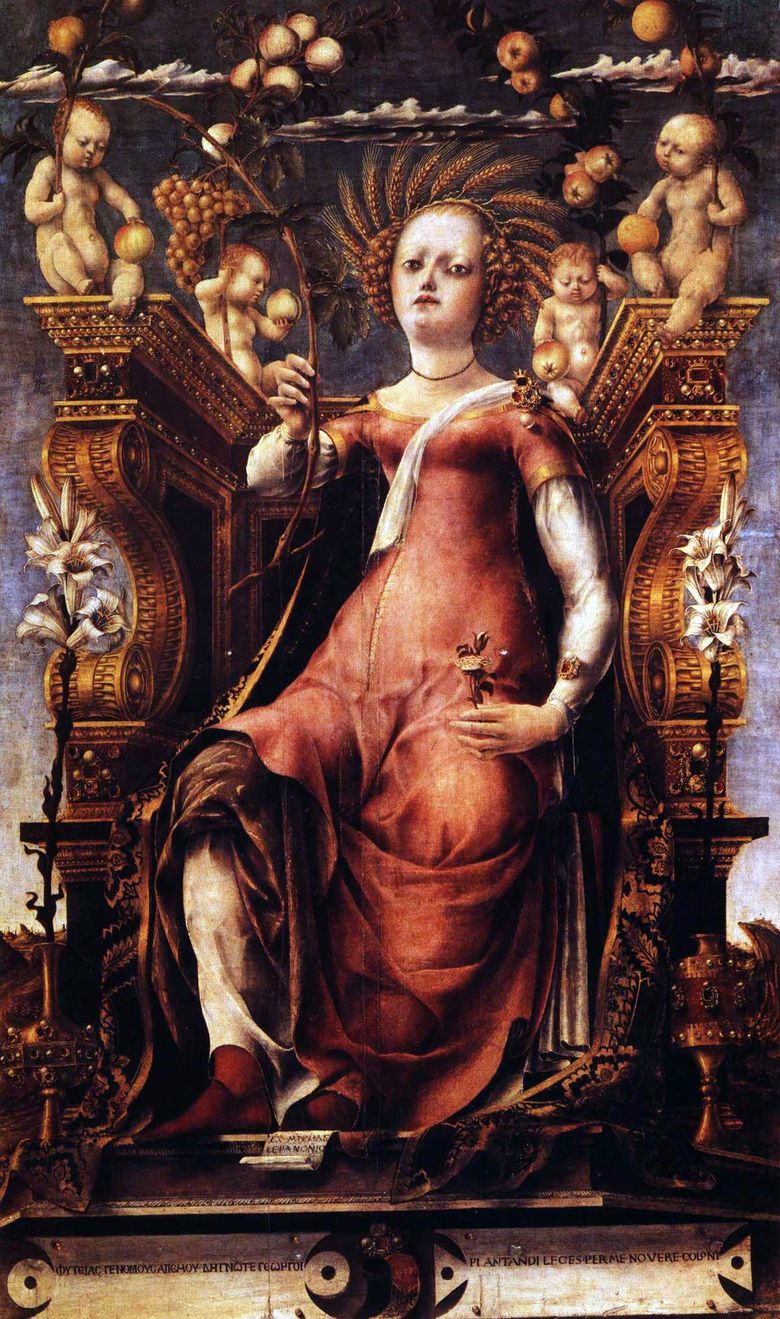 Muse Talia – Michele da Pannonio
Muse Talia – Michele da Pannonio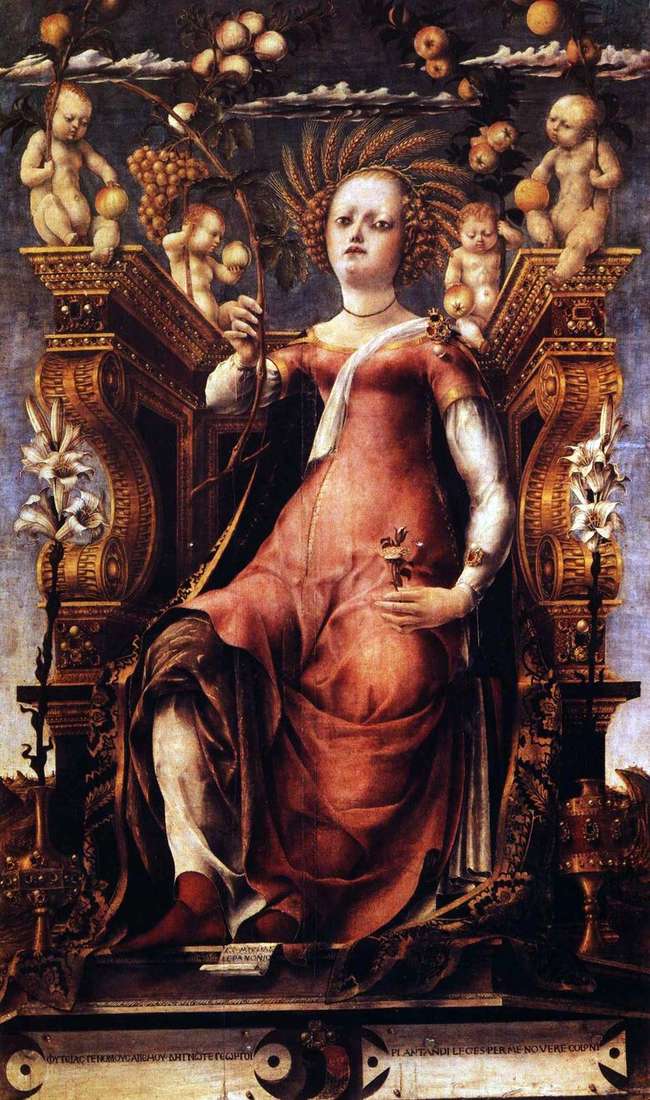 Musa Talia – Michele da Pannonio
Musa Talia – Michele da Pannonio Muse Euterpe by Francesco del Cossa
Muse Euterpe by Francesco del Cossa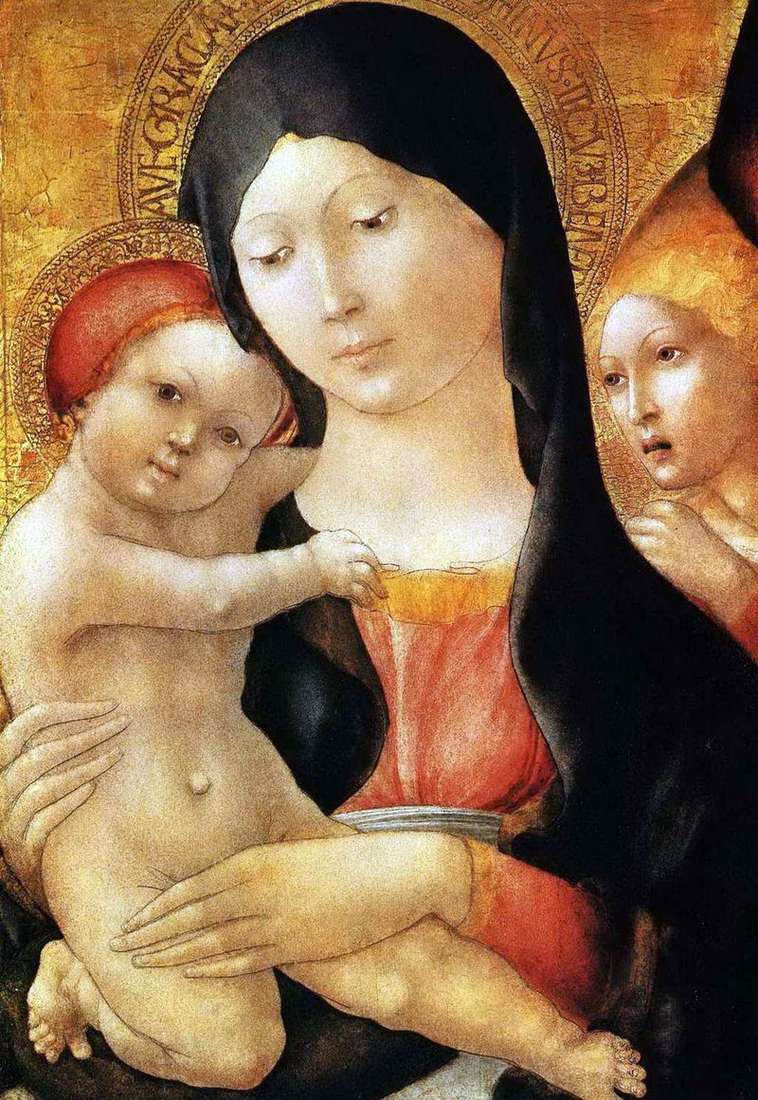 Maria with a baby and an angel by the Liberals and Verona
Maria with a baby and an angel by the Liberals and Verona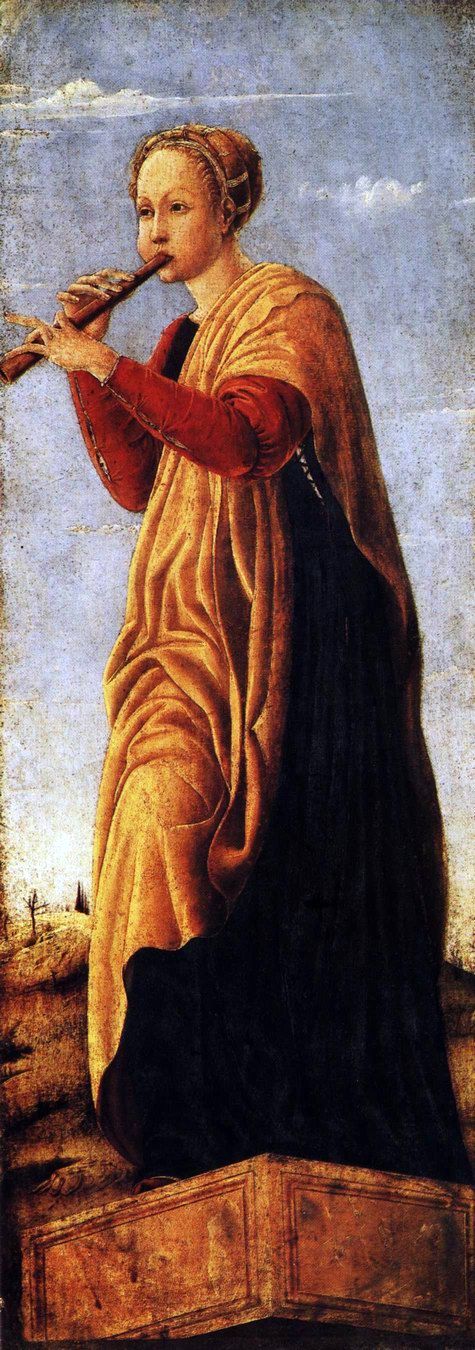 Muse Euterpe – Francesco del Cossa
Muse Euterpe – Francesco del Cossa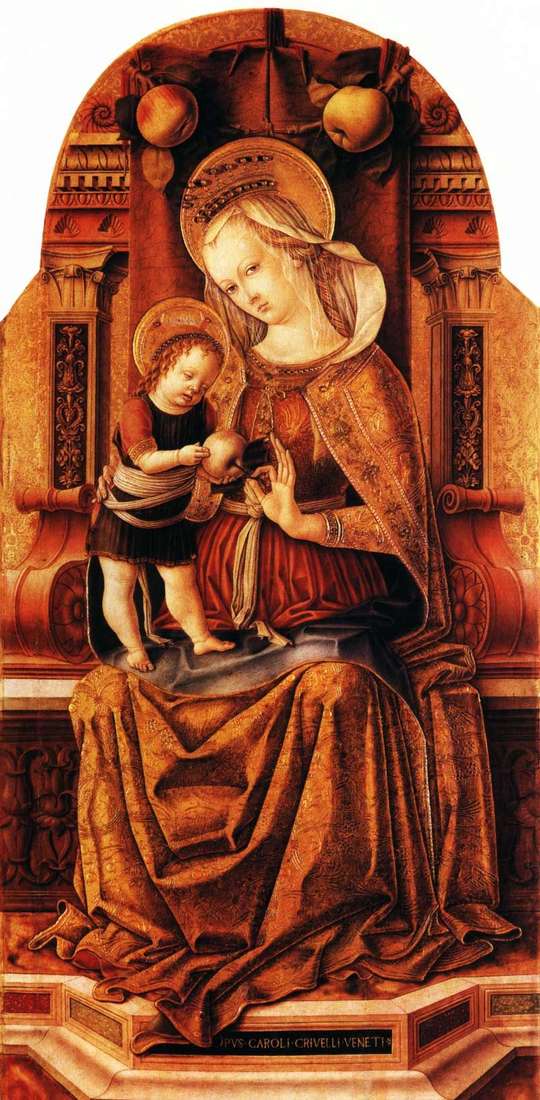 Maria with the baby on the throne by Carlo Crivelli
Maria with the baby on the throne by Carlo Crivelli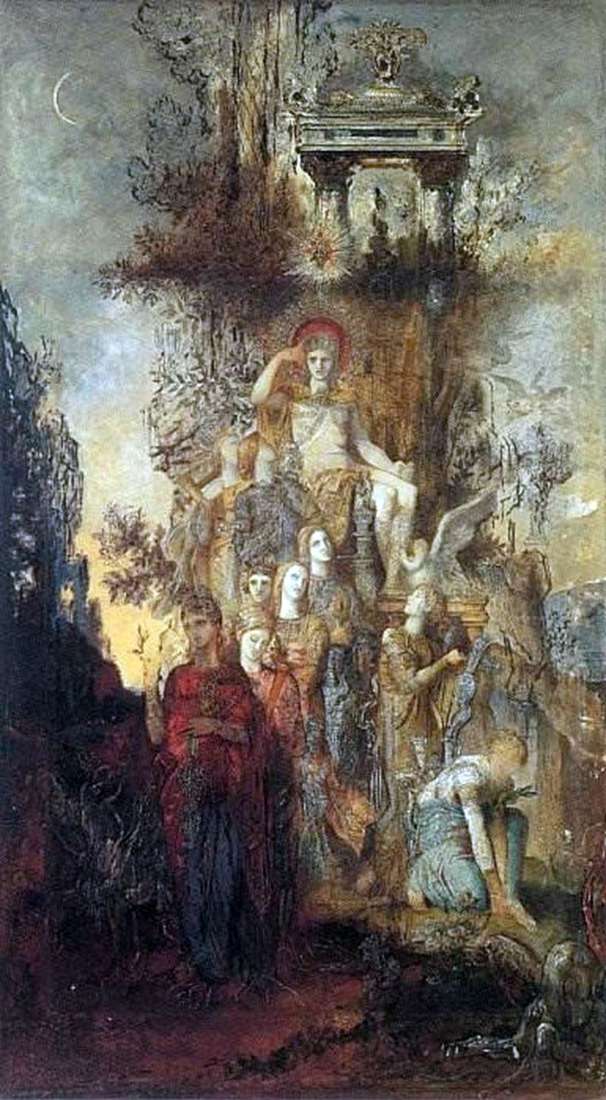 Muse, leaving his father Apollo by Gustave Moreau
Muse, leaving his father Apollo by Gustave Moreau The Festival of Venus (Bacchanalia of Babies) by Titian Vecellio
The Festival of Venus (Bacchanalia of Babies) by Titian Vecellio